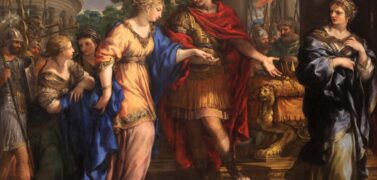*** Scanner’s Notes: What this is and isn’t. This was taken from a copy of Shakespeare’s first folio and it is as close as I can come in ASCII to the printed text. The elongated S’s have been changed to small s’s and the conjoined ae have been changed to ae. I have left the
The Complete Works of William Shakespeare The Tragedy of Antony and Cleopatra
WITH PERMISSION. ELECTRONIC AND MACHINE READABLE COPIES MAY BE DISTRIBUTED SO LONG AS SUCH COPIES (1) ARE FOR YOUR OR OTHERS PERSONAL USE ONLY, AND (2) ARE NOT DISTRIBUTED OR USED COMMERCIALLY. PROHIBITED COMMERCIAL DISTRIBUTION INCLUDES BY ANY SERVICE THAT CHARGES FOR DOWNLOAD TIME OR FOR MEMBERSHIP.>> SCENE: The Roman Empire ACT I. SCENE I.
Pharsalia, [Civil War] by Marcus Annaeus Lucanus
Pharsalia (aka “The Civil War”) by Lucan (Marcus Annaeus Lucanus) A.D. 39 – A.D. 65 Originally written in Latin, approximately A.D. 61-65, by the Roman poet Lucan, and probably left unfinished upon his death in A.D. 65. Although the work has been generally known through most of history as the “Pharsalia”, modern scholarship tends to
Cleopatra by H. Rider Haggard
Etext prepared by John Bickers, jbickers@ihug.co.nz Dagny, dagnyj@hotmail.com and Emma Dudding, emma_302@hotmail.com Cleopatra by H. Rider Haggard DEDICATION My dear Mother, I have for a long while hoped to be allowed to dedicate some book of mine to you, and now I bring you this work, because whatever its shortcomings, and whatever judgment may be
Caesar and Cleopatra by George Bernard Shaw
ACT I An October night on the Syrian border of Egypt towards the end of the XXXIII Dynasty, in the year 706 by Roman computation, afterwards reckoned by Christian computation as 48 B.C. A great radiance of silver fire, the dawn of a moonlit night, is rising in the east. The stars and the cloudless
All For Love by John Dryden
Comments on the preparation of this e-text SQUARE BRACKETS: The square brackets, i.e. ” has been added to the stage directions. CHANGES TO THE TEXT: Character names have been expanded. For Example, CLEOPATRA was CLEO. Three words in the preface were written in Greek Characters. These have been transliterated into Roman characters, and are set


